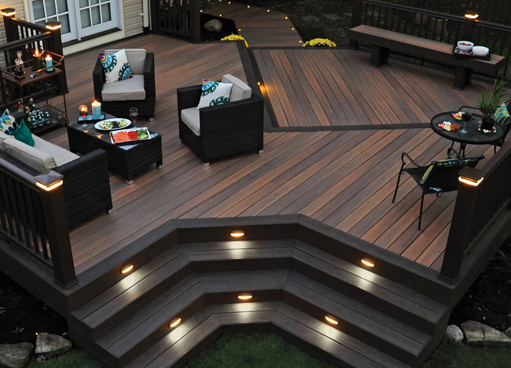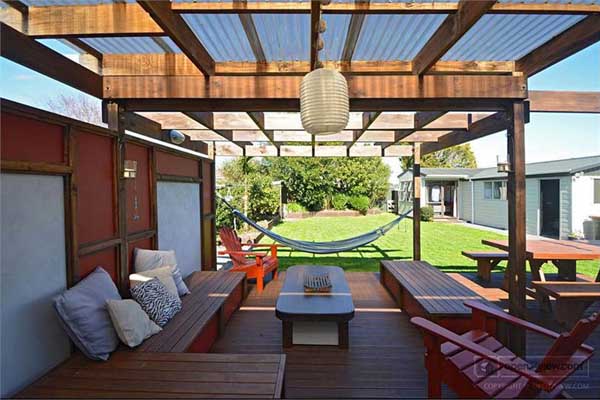Getting away from the hustle and bustle to your second home will be marked boldly and brightly on your calendar. It’s where memories are made, and no doubt you’re dreaming of lazing away a few afternoons. What you definitely won’t want to do is be sanding and staining tired-looking decking.
If your holiday home already has decking, then you’ll remember how fantastic it looked when it was new, or when you’ve spent days smartening it up; an annual chore.
Or perhaps you’ve not started your decking project yet and are looking for some inspiration. Either way, the world of decking material has dawned a new era, and with it comes a new breed of composite decking. You might have heard about composite decking already.

Early wood and plastic composites (WPCs) first arrived in the mid-nineties, its plastic-like appearance more akin to nursery equipment. Fortunately, each decade has seen improvements, and today’s generation of high-end composite decks are hard to distinguish between real wood, but the real beauty is that it’s virtually maintenance-free. It’ll last season after season. Forget smartening up that tired old wood; you can replace it with composite, which can be attached to your existing structure.
Use it on any type of holiday home
There doesn’t seem to be any restriction on where composite decking can be used. Basically, it can be fitted wherever a traditional wooden deck would go: penthouse rooftops, balconies, porches, caravans, boathouses and moorings. There’s a good choice in wood effects too, including matching railings and balustrades, so you can blend it with your property. In fact, you might end up using it to re-style your holiday home altogether. Good suppliers will send you free samples so you can see and feel the material before you buy.
Is composite really better than wood?
If you’ve got any wooden decking or garden furniture, then you’ll know how it wears. Regardless of whether it’s pine or hardwood, the low sun during those short winter days means it attracts mildew and becomes dull and slippy, and the change in temperature causes it to warp and splinter. It takes hours of maintenance to preserve wood, and heaps of expensive non-slip varnish. Wooden decking is lethal.
The latest composite is made from a blend of recycled (or salvaged) wood and resin, so it’s a sustainable product. Besides it being eco-friendly, composite won’t warp or splinter, and it won’t need sanding or staining, ever. It’s also strong and sturdy, and doesn’t creak. Most composite decking has a non-slip surface, meaning it’s perfect next to pools and riversides. It doesn’t need an annual touch-up and should last as long as it’s guaranteed to; often 25 years or more. For those holiday homes by the sea, salt is the enemy, but composite doesn’t rot.
Easy to install and adds value
Working with wood can be tricky, as it tends to have a mind of its own. Knots send screws off to the side, and sometimes it can split. Composite is well-known to be much easier to install. Each manufacturer’s kit is designed so the parts work together: special screws which fit like a glove and material without knots. And once it’s finished, it’ll transform that outside space into something worth a second glance. It will add value and gain the wow-factor.
People often complain about the money and time wasted on the upkeep of their holiday homes so it’s a good enough deterrent to decide against using decking. But now you don’t need to worry about all that. Mark that date as bold and bright as you can and look forward to lazing the days away on your new composite decking.
For more information, please visit: https://www.timbertechuk.co.uk

